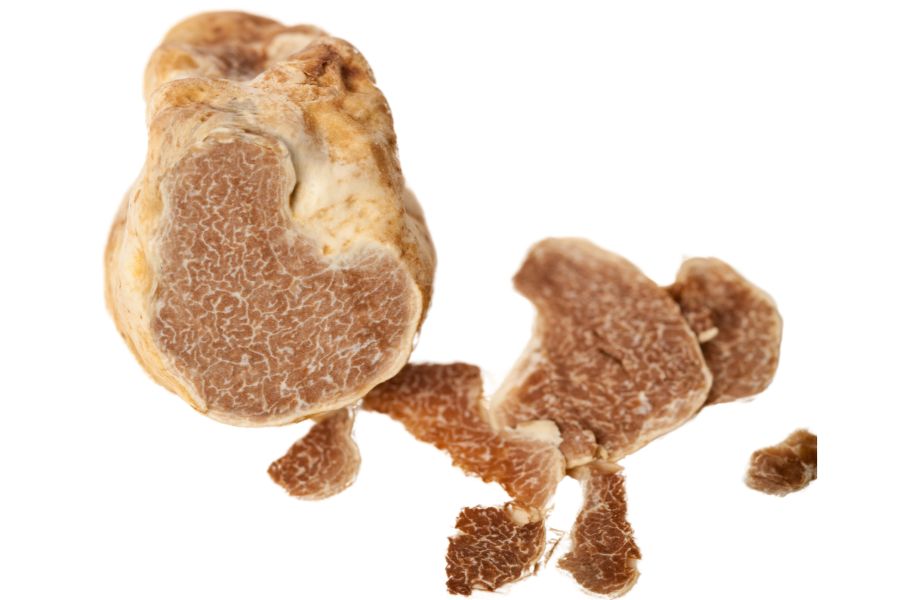Truffles grow in Connecticut forests and can be worth a lot of money. These tasty fungi hide underground near certain trees throughout our state. They are hard to find without the right knowledge.
Many people use trained dogs to sniff out truffles in wooded areas. Dogs can smell the strong scent of ripe truffles even when they are buried under soil. Some hunters also use pigs, but dogs are more common in Connecticut.
The best time to hunt for truffles in Connecticut is during the fall and winter months. Our state has the right soil and climate for black truffles to grow naturally. White truffles are rare but can be found too.
Connecticut oak and hazelnut trees often have truffles growing near their roots. The relationship between these trees and truffles helps both survive. Looking near these trees improves your chances of finding truffles.
Truffle hunting is slow and deliberate, and sometimes you return with only stories. But when the basket does start to fill, the mix of finds can be more exciting than you’d expect from a familiar walk.
What We Cover In This Article:
- What Wild Truffles Look Like
- Truffle Lookalikes To Avoid
- Best Practices For Finding Truffles
- Where You Can Find Truffles Around The State
- Other Great Locations For Truffles
- When The Best Time Of The Year Is To Find Truffles
- The extensive local experience and understanding of our team
- Input from multiple local foragers and foraging groups
- The accessibility of the various locations
- Safety and potential hazards when collecting
- Private and public locations
- A desire to include locations for both experienced foragers and those who are just starting out
Using these weights we think we’ve put together the best list out there for just about any forager to be successful!
A Quick Reminder
Before we get into the specifics about where and how to find these plants and mushrooms, we want to be clear that before ingesting any wild plant or mushroom, it should be identified with 100% certainty as edible by someone qualified and experienced in mushroom and plant identification, such as a professional mycologist or an expert forager. Misidentification can lead to serious illness or death.
All plants and mushrooms have the potential to cause severe adverse reactions in certain individuals, even death. If you are consuming wild foragables, it is crucial to cook them thoroughly and properly and only eat a small portion to test for personal tolerance. Some people may have allergies or sensitivities to specific mushrooms and plants, even if they are considered safe for others.
The information provided in this article is for general informational and educational purposes only. Foraging involves inherent risks.
What Wild Truffles Look Like
The U.S. is home to several native truffle species that grow wild in forests across the country. Each one has its own unique scent, appearance, and preferred habitat. Here are the types of truffles you can find:
Oregon Black Truffles (Leucangium carthusianum)

Leucangium carthusianum, also called the Oregon black truffle, grows in the Pacific Northwest and usually shows up around Douglas-fir trees. It’s a native species and one of the more well-known edible truffles from the region.
On the outside, it looks like a small lump of coal—dark black, kind of lumpy or warty, and sometimes slightly smoother in spots. They’re usually about the size of a golf ball, but they can be smaller or larger depending on the season.
Inside, the truffle is firm with a marbled pattern of gray and white veins running through it. When it’s fresh, it smells fruity, almost like pineapple, but the scent gets stronger and muskier as it ripens.
If you’re out looking for them, check in moist, shady forests with soft, loamy soil, especially where there’s a lot of moss or ferns. They grow just below the surface, so people often use trained dogs to help sniff out the ripe ones.
Compared to the Oregon white truffle, which is lighter in color and has a sharper, garlicky aroma, the black truffle has a deeper, more earthy smell. It’s also bigger and firmer than the southern U.S. truffles like Tuber lyonii, which tend to be smaller, paler, and grow around hardwoods like oaks and hickories.
Oregon Winter White Truffles (Tuber oregonense and Tuber gibbosum)
Oregon has two native white truffles that are starting to get more attention: the Oregon Winter White Truffle (Tuber oregonense) and the Oregon Spring White Truffle (Tuber gibbosum). They grow underground in forests and are prized for their strong, savory aroma.
From the outside, these truffles are small, roundish, and kind of bumpy, usually pale beige to light brown. Cut one open, and you’ll see a white interior that darkens with age, showing off a web of white veins when it’s fully mature.
The Winter White Truffle pops up from late fall into February, while the Spring White starts showing up around January and can last into June. They’re pretty similar, but the Winter variety is known for having a more powerful scent and flavor.
To find them, you’ll want to look in forests with younger Douglas-fir trees on the west side of the Cascades. Truffle hunters often check for loose soil or spots where animals have been scratching, which can be a sign there’s something below.
When fully ripe, both types give off a bold smell that’s often compared to garlic, cheese, or earthy spices. They’re usually served raw, shaved over dishes to add that truffle kick without losing any of the aroma.
Appalachian Truffle (Tuber canaliculatum)
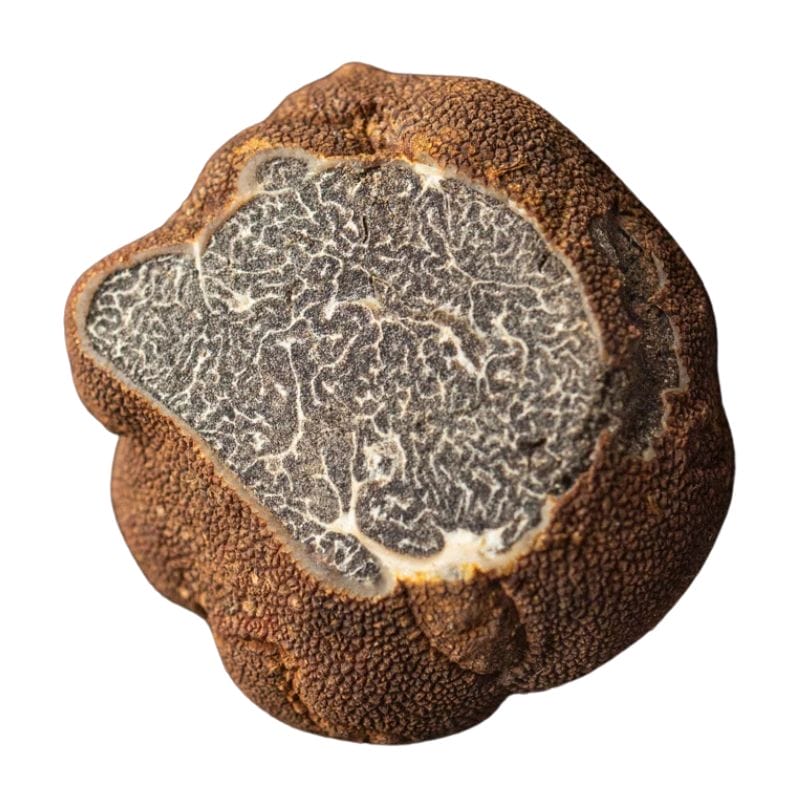
The Appalachian truffle, also known as Tuber canaliculatum, is a native North American truffle that’s slowly getting noticed. It’s about the size of a walnut and has a reddish-brown, bumpy outer surface that looks kind of like a rough, warty potato.
When you cut it open, the inside is firm and dark brown with thin white veins running through it like a marbled pattern. If it’s fully ripe, the smell is strong and earthy—some say it has a kind of nutty, funky aroma that stands out.
You can find these truffles in mixed hardwood forests, especially around oaks and pines, from late summer through fall. They grow underground, so look for spots where the soil is loose and animals like squirrels have been digging—sometimes that’s a good clue.
If you’re foraging, gently raking the top layer of soil near tree roots can help, but a trained dog or even a good nose makes it way easier. Once you know what to look for, the reddish color and bumpy skin are good signs you’ve found the right thing.
Compared to truffles like Tuber oregonense or Leucangium carthusianum, Tuber canaliculatum is more subtle in every way. Its smaller size and lighter scent mean you have to pay closer attention when foraging.
It’s also not as popular in the culinary world because it doesn’t pack the same punch in terms of flavor or aroma. Still, finding one can be rewarding, especially if you’re exploring different types of fungi in the area.
Desert Truffle (Terfezia and Tirmania spp.)
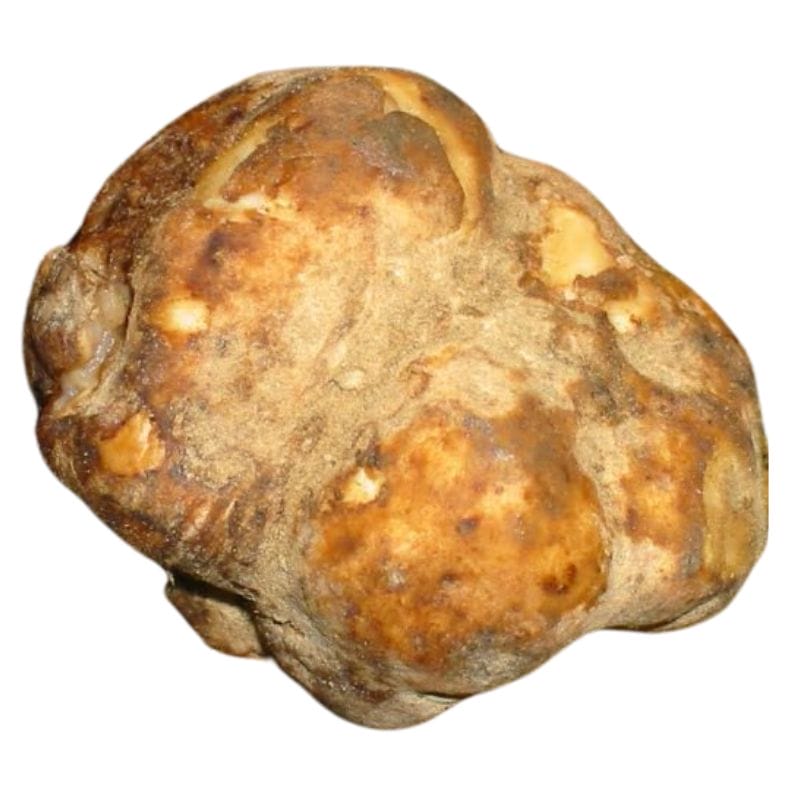
Terfezia and Tirmania are two types of truffles that are sometimes called desert truffles. These are a bit different from the truffles we usually think of, with their bold flavors and rich aromas.
These ones are a little more understated, but they’re fascinating in their own right. What makes them stand out is their ability to thrive in dry, harsh environments where you wouldn’t expect something so delicate to grow.
Unlike the earthy, intense aroma of black or white truffles, Terfezia and Tirmania truffles have a milder scent and flavor. They’re often described as nutty, with a hint of sweetness, but they lack the strong garlicky or musky notes you might associate with other truffles.
Their texture is also different—more firm and less oily than what you’d find with species like Tuber oregonense. They might not have the same culinary punch, but they’re still prized in traditional dishes, where their subtle flavors shine in simpler recipes.
When it comes to appearance, they’re easy to spot once you know what you’re looking for. They’re round to slightly irregular in shape, and their color can range from light beige to a reddish-brown, depending on the species.
The surface is usually smooth or slightly textured, without the rough, knobby look of a black truffle. Cut one open, and you’ll see a pale interior that’s often uniform in color, lacking the intricate veining you’d see in something like Leucangium carthusianum.
Pecan Truffle (Tuber lyonii)
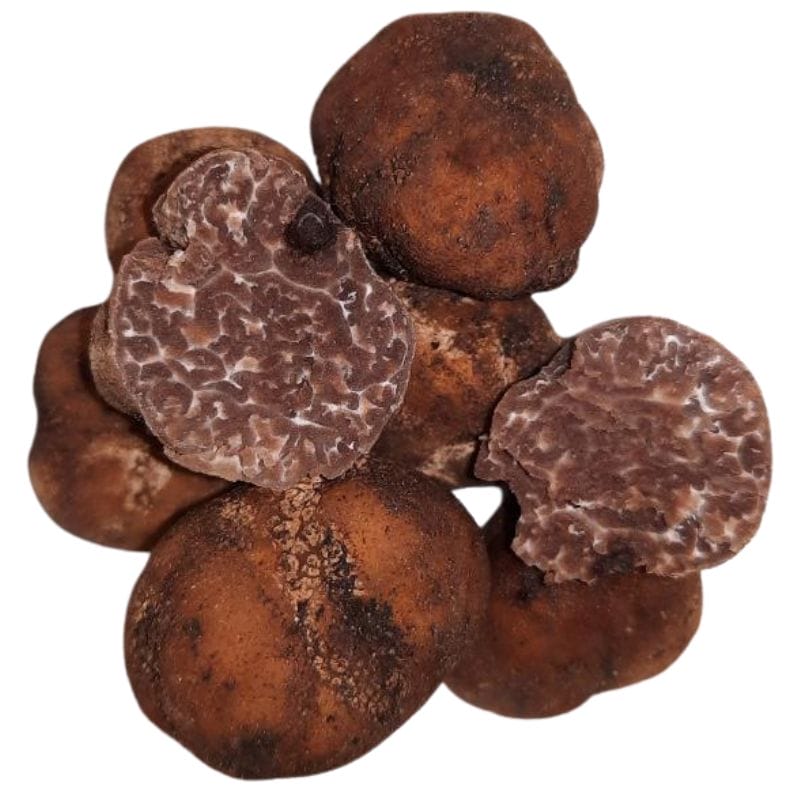
Tuber lyonii, also known as the pecan truffle, is a native North American truffle that grows underground near the roots of pecan trees. You’ll mostly find it in the southeastern U.S., especially in states like Texas, Georgia, and Mississippi.
On the outside, pecan truffles are round to lumpy and have a smooth, light brown skin that darkens as they age. They’re usually about the size of a marble or golf ball, and sometimes they even poke up slightly through the soil surface.
If you slice one open, the inside has a pretty marbled look—light tan streaks mixed with darker brown, almost like wood grain. The smell is earthy, nutty, and kind of warm, especially when they’re fully mature.
When you’re out looking for them, check under mature pecan trees or other hardwoods like oaks and hickories. Trained dogs can help sniff them out, but people sometimes spot them by looking for little cracks in the soil or raised areas near the tree’s base.
Compared to other U.S. truffles like the Oregon white truffle or the Appalachian black truffle, pecan truffles have a milder flavor and are more common in orchards. They’re a solid option in the kitchen—freshly sliced over pasta or mixed into butter—and they don’t come with the high price tag of their European cousins.
Truffle Lookalikes To Avoid
When you’re out hunting you also need to know about a few different fungi species that look very similar to the delicious truffles we’re after but are either inedible or not worth eating. Keep an eye out for:
Pine Truffles (Geopora cooperi)
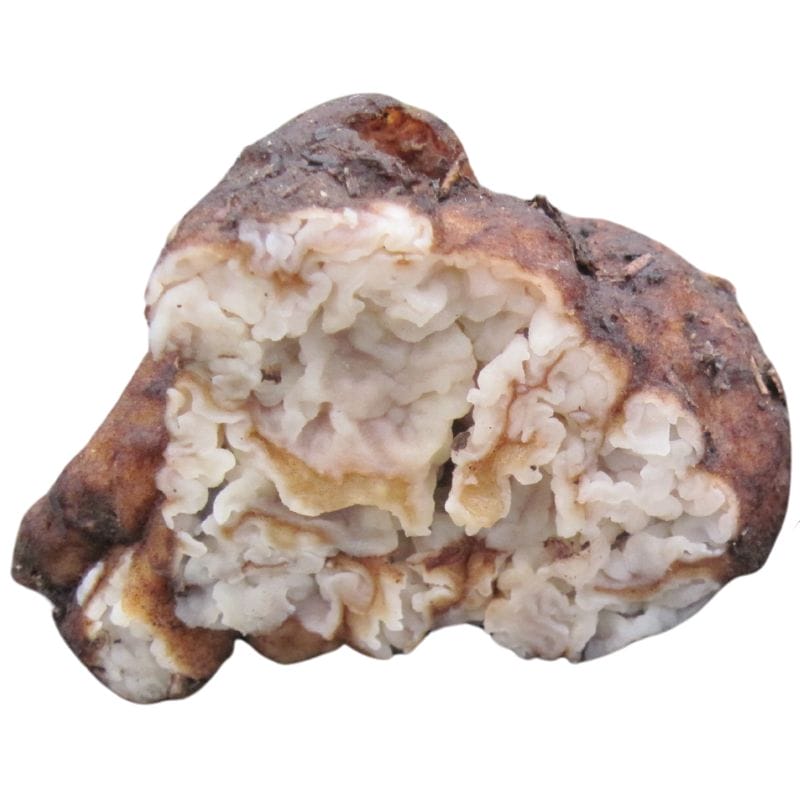
Geopora cooperi is a fungus that can easily confuse someone new to truffle hunting. It’s sometimes called the pine truffle because it grows underground like a true truffle and often pops up near certain trees.
At first glance, it might seem like you’ve hit the jackpot, but this one is a false truffle, not something you’d want to eat or sell.
The easiest way to tell Geopora cooperi apart from real truffles is by looking closely at its structure. While true truffles have a smooth or slightly knobby exterior and a marbled interior, Geopora cooperi has a rougher, more irregular outer surface.
When it matures, it sometimes splits open, revealing a cup-like shape, which true truffles never do. Inside, it’s less dense and doesn’t have the intricate veining that makes real truffles so unique.
Another big difference is the smell. True truffles have a strong, rich aroma that’s earthy, sweet, or garlicky, depending on the species. Geopora cooperi, on the other hand, has a much weaker scent, and it’s not as pleasant or distinctive.
If you’re relying on aroma to identify your find, this one will give itself away pretty quickly. So, while it might look similar at first, a closer inspection will show it’s not the culinary treasure you’re hoping for.
Stinking Slime Truffle (Melanogaster ambiguus)
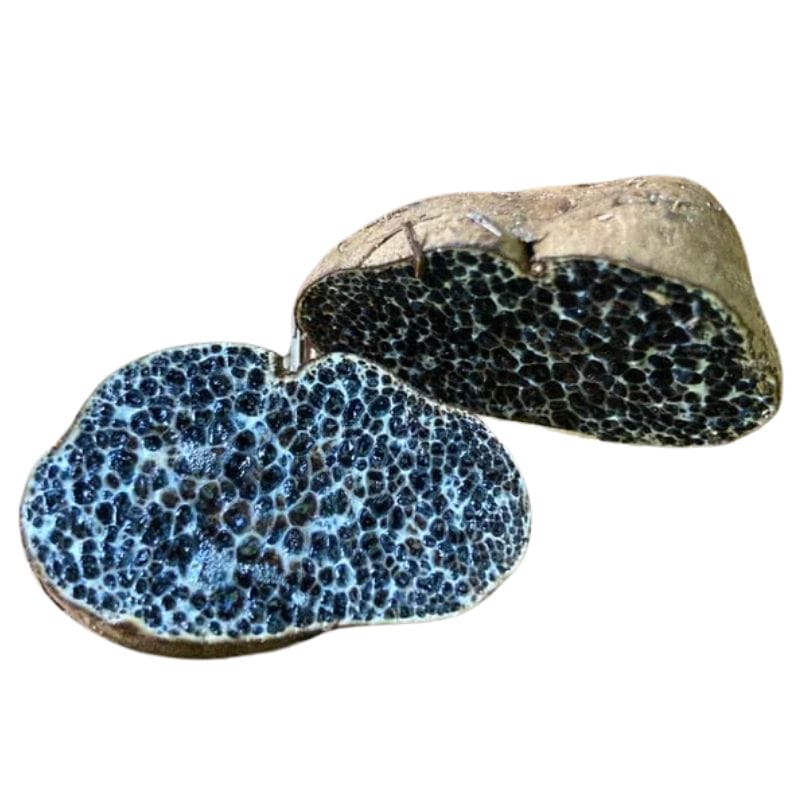
Melanogaster Ambiguus, because of their reddish-brown to dark brown exterior, might look like true truffles at first glance, but they’re quite different when you know what to look for.
The key difference is on the inside. When you cut open Melanogaster ambiguus, the interior is filled with flattened cells that have a shiny black gelatinous feel to them. Real truffles, on the other hand, have those beautiful marbled veins running through their flesh, almost like a web.
Another giveaway is the smell. While real truffles have a rich, earthy aroma that’s mouthwatering, Melanogaster ambiguus tends to have a much stronger, almost unpleasant odor—it’s not something you’d want to sprinkle on your pasta.
Earthballs (Scleroderma)
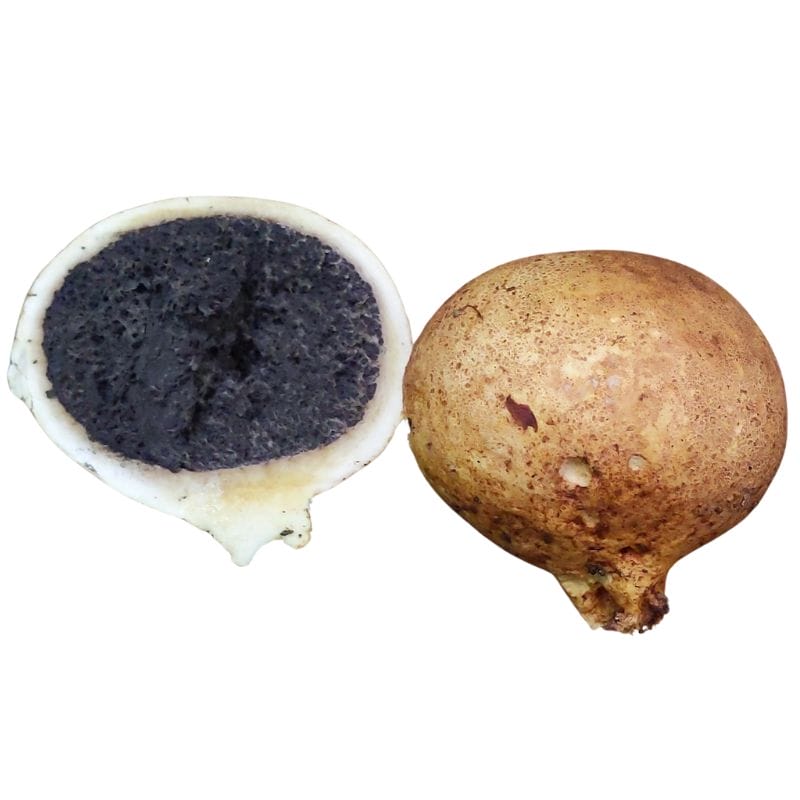
Scleroderma, commonly called earthballs, can easily fool someone who’s just starting out because they grow underground and have a round shape similar to truffles. But don’t be tricked—Scleroderma is not a true truffle, and it’s actually toxic, so it’s important to know how to tell the difference.
The first thing you’ll notice is the outer skin, which is thicker and tougher than that of most truffles. It can range in color from yellowish to dark brown, often with a rough or cracked texture.
If you cut it open, the difference becomes even clearer. While true truffles have a marbled interior with delicate white veins, Scleroderma starts out with a whitish inside that quickly darkens as it matures, turning black or purple with no marbling. It’s dense and solid, almost like charcoal in the later stages.
Another big giveaway is the smell. True truffles have a rich, earthy aroma that makes them so prized, while Scleroderma has little to no pleasant scent—some even describe it as musty or unpleasant.
Deer Truffles (Elaphomyces)
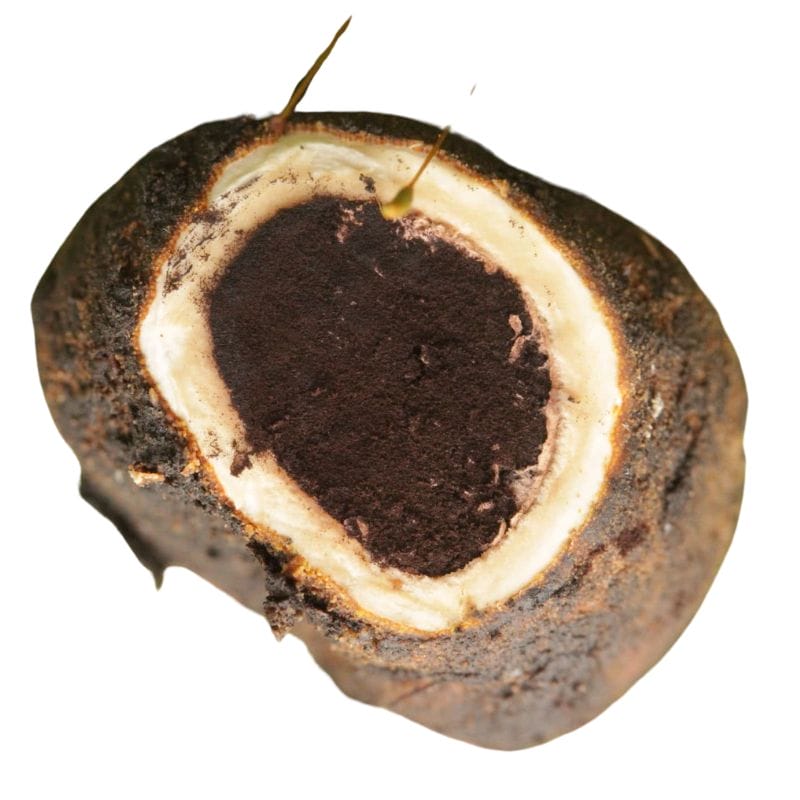
Elaphomyces, also known as deer truffles, look like true truffles at first glance, but they’re a whole different story. They’re called deer truffles because wildlife, especially deer and rodents, love to eat them. For us humans, though, they’re not edible—and definitely not what you want to mistake for a prized truffle.
Here’s how you can tell Elaphomyces apart from the real thing. First, they have a tough, warty outer surface that can range from pale tan to black, depending on the species and their age.
When you cut them open, the inside is solid and sometimes speckled or marbled, but not in the delicate, vein-like pattern you’d see in true truffles.
Their smell is also a big giveaway. Instead of the rich, earthy aroma of an edible truffle, Elaphomyces either has little scent or an odor that’s earthy but not particularly appealing.
Another thing to know is that Elaphomyces often grows deeper in the soil than true truffles, and they tend to have a harder, woodier texture.
Best Practices For Finding Truffles
Truffle hunting can be a rewarding adventure if you know the right tips and tricks. Here’s what you should keep in mind to improve your chances of finding these underground treasures:
Wait 10 to 14 Days After Heavy Rain
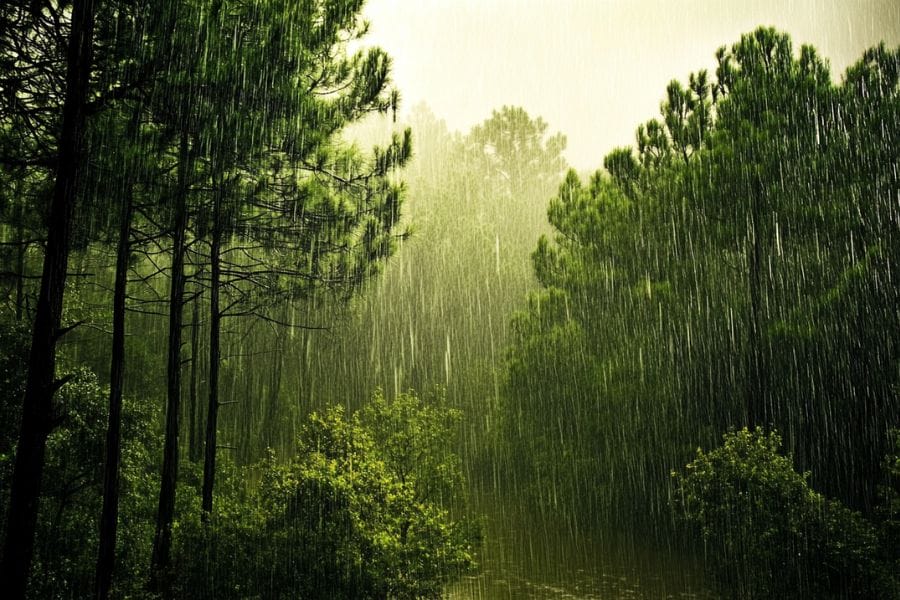
After a heavy rain, it’s best to wait about 10 to 14 days before heading out. This gives the truffles time to mature and release their signature aroma, making it easier for you (and your dog) to sniff them out. Rain helps truffles grow, but they don’t start giving off their scent right away.
As the soil warms up, the truffles get more aromatic, and the ground becomes looser, which makes digging easier without disturbing the environment too much. The timing is perfect to find truffles at their best—both in quality and in how easy they are to locate.
Find the Right Trees
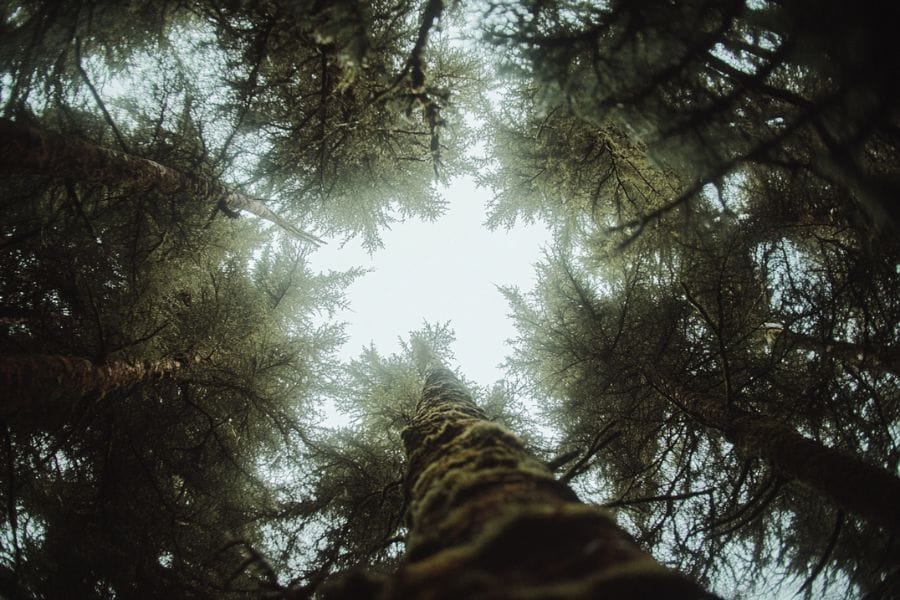
Truffles don’t grow just anywhere—they have a special relationship with certain trees. You won’t find them under just any tree, so knowing which ones to look for can make all the difference. Some of the best trees to look out for are:
- Pines
- Douglas-firs
- Oaks
- Hazelnuts
- Cypresses
- Willows
For example, if you’re looking for Oregon white truffles, keep an eye out for Douglas-fir trees. California black truffles, on the other hand, are often found near oaks and hazelnuts. The soil around these trees also needs to be slightly alkaline, so it helps to know what kind of ground you’re walking on as well.
Watch for Wildlife Activity
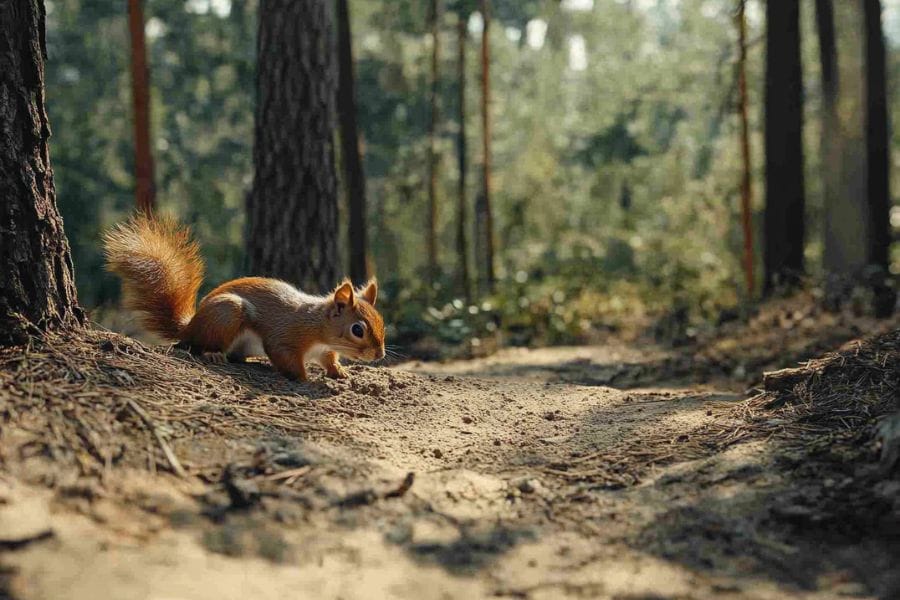
Animals like squirrels and chipmunks often help spread truffle spores, and sometimes their digging can lead you straight to truffles. While you won’t always find truffles in every pit animals dig (they also look for things like acorns or bulbs), fresh digs are a good clue. The more recent the pit, the better chance it has of leading to truffles.
Even though animals are a part of the truffle cycle, most hunters prefer using dogs to find the real treasure underground. Dogs have an incredible nose for truffles and can pinpoint their location much more reliably than any squirrel or chipmunk.
Get a Little Help from a Truffle-Hunting Dog
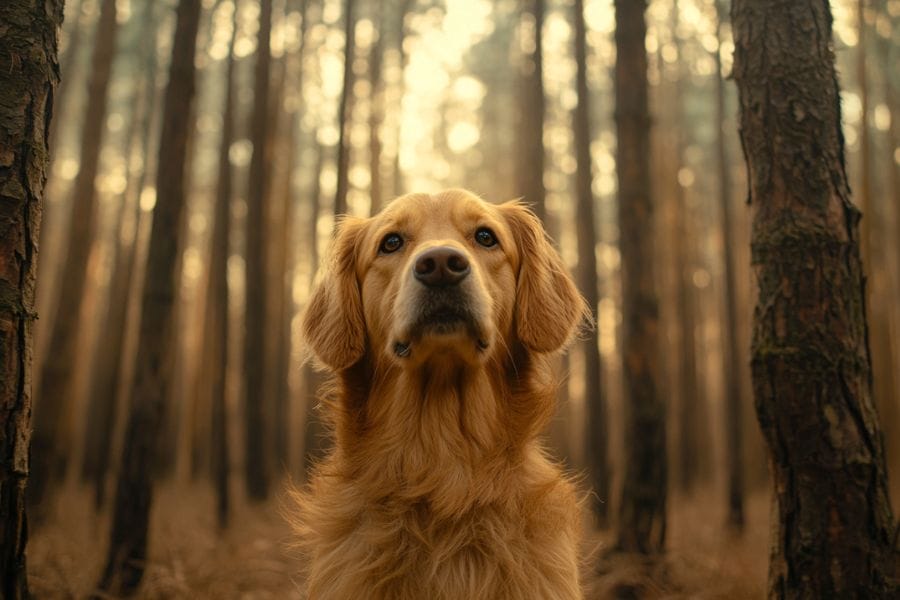
If you’re serious about truffle hunting, a trained dog can make your life a whole lot easier. Their sense of smell is extraordinary, and they’re trained to find mature truffles buried beneath the surface. Many truffle hunters swear by their dogs, and for good reason—they’re much more accurate than humans when it comes to sniffing out truffles.
If you don’t already have a trained dog, you can connect with local foraging groups or specialized trainers who offer truffle-hunting services. Some places even host events where you can see experienced handlers with their dogs in action. And if you’re feeling adventurous, you can train your own dog using truffle-scent kits and practice in a controlled space before hitting the woods.
Before you head out
Before embarking on any foraging activities, it is essential to understand and follow local laws and guidelines. Always confirm that you have permission to access any land and obtain permission from landowners if you are foraging on private property. Trespassing or foraging without permission is illegal and disrespectful.
For public lands, familiarize yourself with the foraging regulations, as some areas may restrict or prohibit the collection of mushrooms or other wild foods. These regulations and laws are frequently changing so always verify them before heading out to hunt. What we have listed below may be out of date and inaccurate as a result.
Where You Can Find Truffles Around The State
Now we’re going to go over five of the best locations for finding truffles. We’ll go a bit in-depth here and then provide a much longer list of other spots to try.
Pachaug State Forest
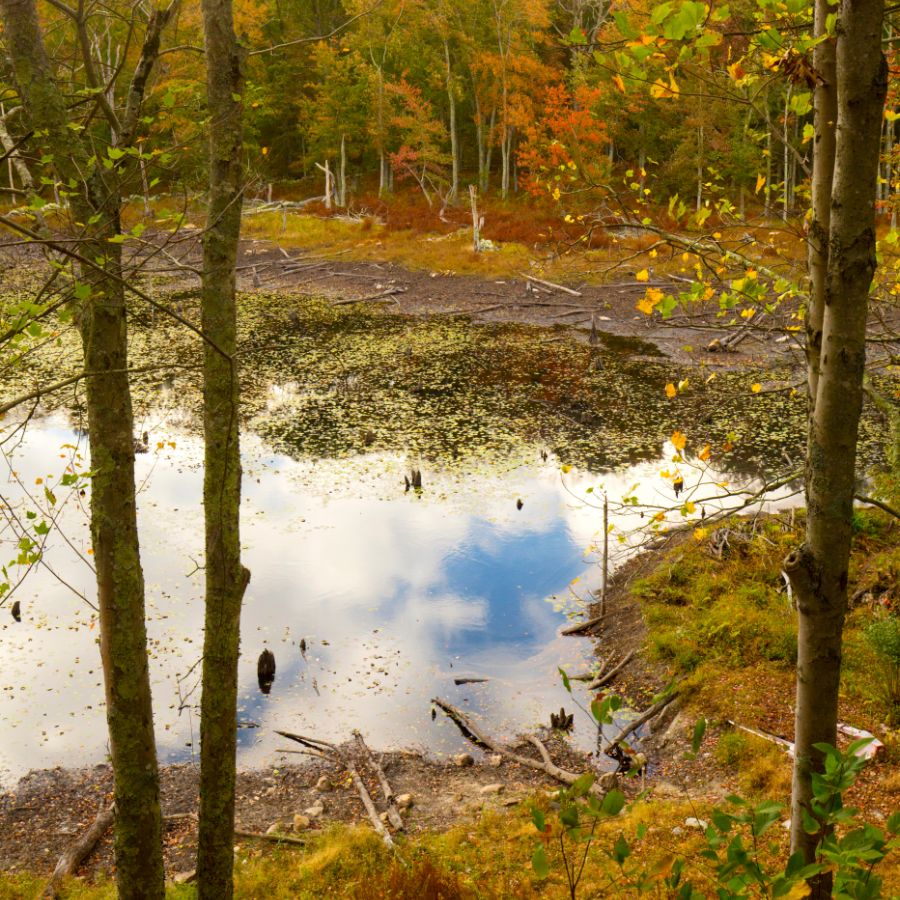
Pachaug State Forest is Connecticut’s largest state forest, spanning over 26,000 acres in the eastern part of the state. The forest has a mix of oak, maple, and beech trees, which are perfect companions for truffles. These fungi love to grow near tree roots in the slightly acidic soil found throughout the forest.
The best areas to hunt for truffles are where the ground is covered with fallen leaves and the soil is loose. Look for areas where squirrels have been digging, as they sometimes search for truffles too. The Chapman Area has older trees with established root systems that support truffle growth.
Pachaug has many different landscapes including wetlands, hills, and flat areas. The forest is so big that many parts remain unexplored by truffle hunters. Bring a small rake to gently move the top layer of soil when searching near beech and oak trees.
Sleeping Giant State Park
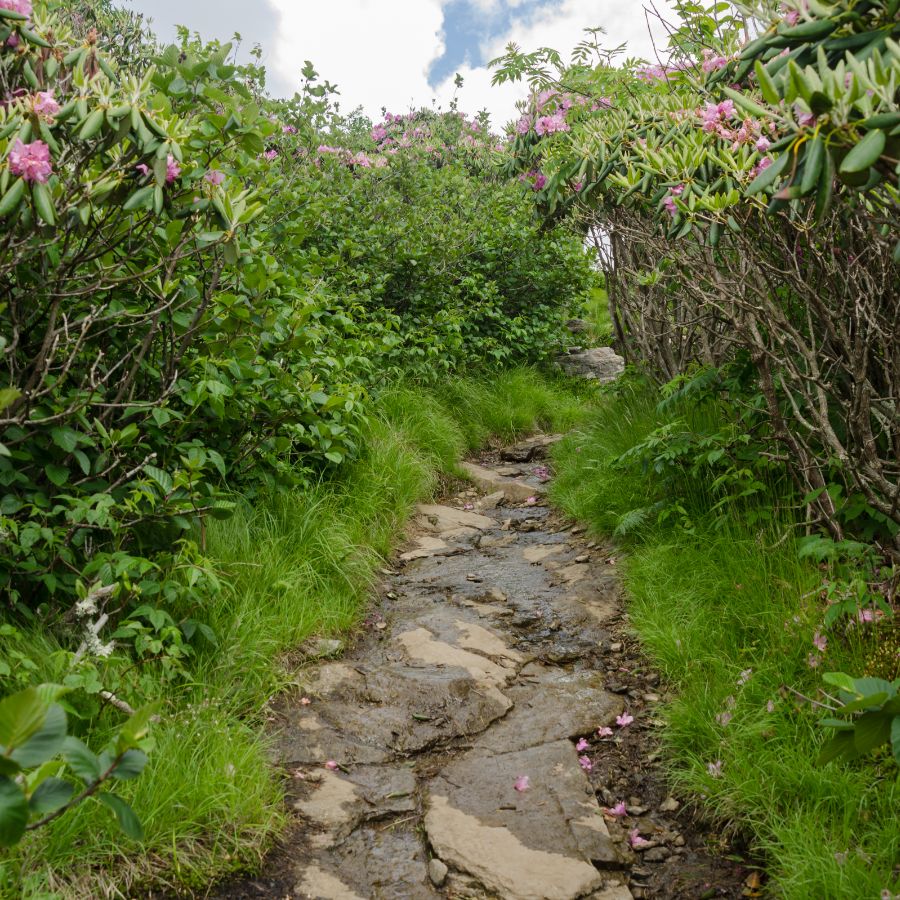
Sleeping Giant State Park in Hamden looks like a sleeping person when viewed from a distance. Its diverse terrain of hardwood forests and varied elevations creates perfect spots for truffles to grow. The eastern side of the park, away from the main trails, has some of the best conditions.
Truffles here often grow near the base of old oak and beech trees. Check around trees that are at least 20 years old, as truffles take time to develop their relationship with tree roots.
The Tower Trail area has good spots where water runoff creates nutrient-rich soil. Many visitors walk right past truffle spots without knowing what’s below. The north-facing slopes tend to be moister and can be productive after a good rain.
West Rock Ridge State Park
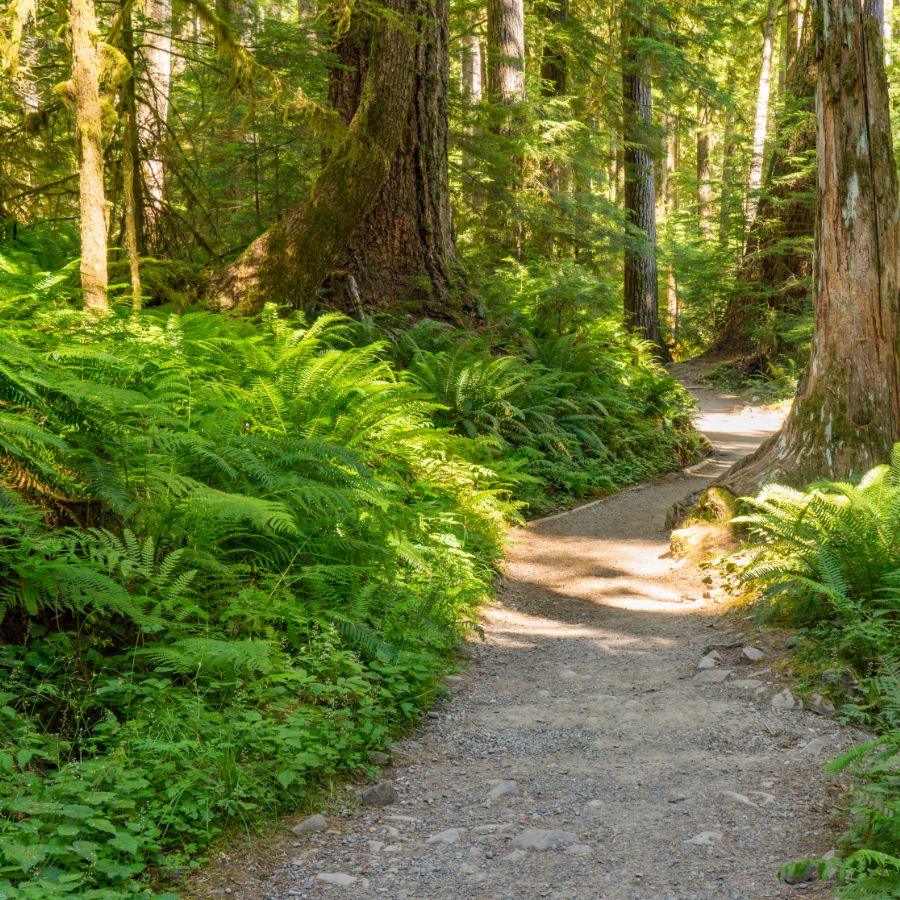
West Rock Ridge State Park crosses New Haven, Hamden, and Woodbridge. This park has a long trap rock ridge with forests that truffles love. The unique water drainage patterns help truffles thrive in certain areas.
The southern sections have older trees with established fungal networks. Look for areas with thick leaf litter but not much undergrowth. This shows good soil for truffles.
Truffles here grow slightly deeper than in other places. The area near Lake Wintergreen has rich soil for several truffle species. During wet seasons, check gentle slopes where water carries nutrients but doesn’t pool. This park has rare Connecticut truffle varieties that grow in this specifik type of forest enviroment.
Natchaug State Forest
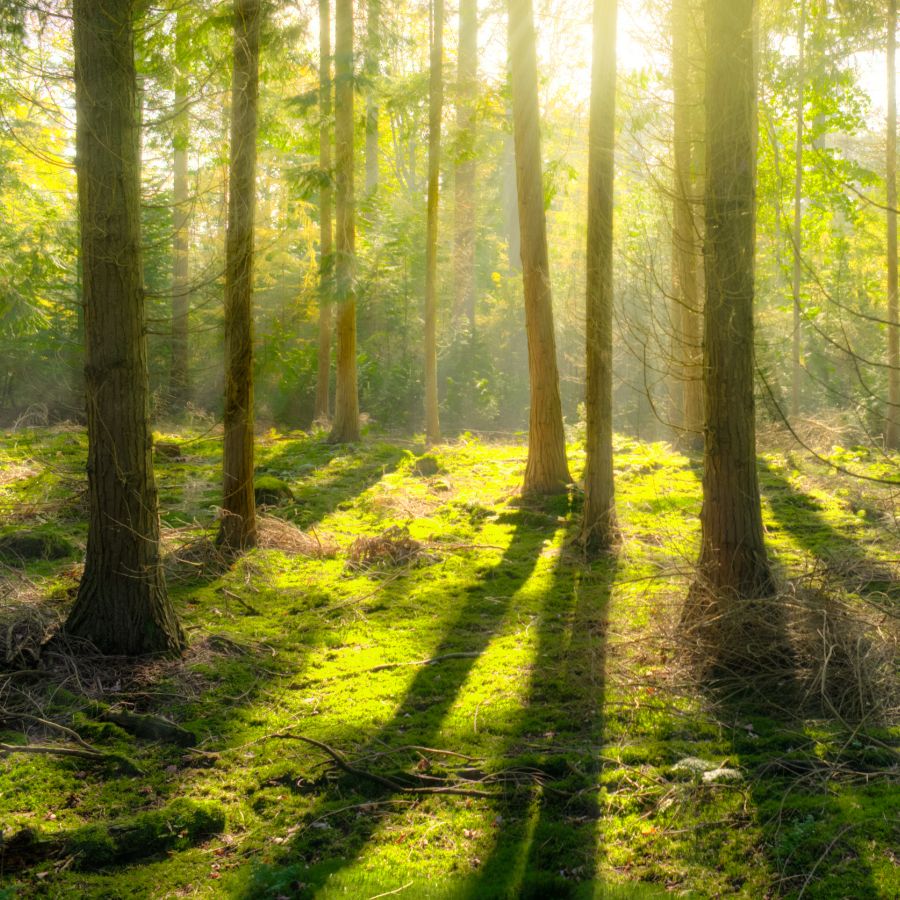
Natchaug State Forest is located in northeastern Connecticut in Eastford and Ashford. The name means “land between the rivers” in Native American language. This hints at the fertile soil that truffles love.
The General Lyon section has some of the oldest trees and makes an excellent starting point for truffle hunting. Look for areas where the ground feels soft under your feet. This shows good fungal activity.
Diana’s Pool area has mineral-rich soil that produces tasty truffles. Check around the base of trees where the soil meets the trunk. Natchaug’s diverse forest creates many small habitats where different truffle species can grow. Some truffle hunters find success around white pine stands mixed with hardwoods.
Mohawk State Forest
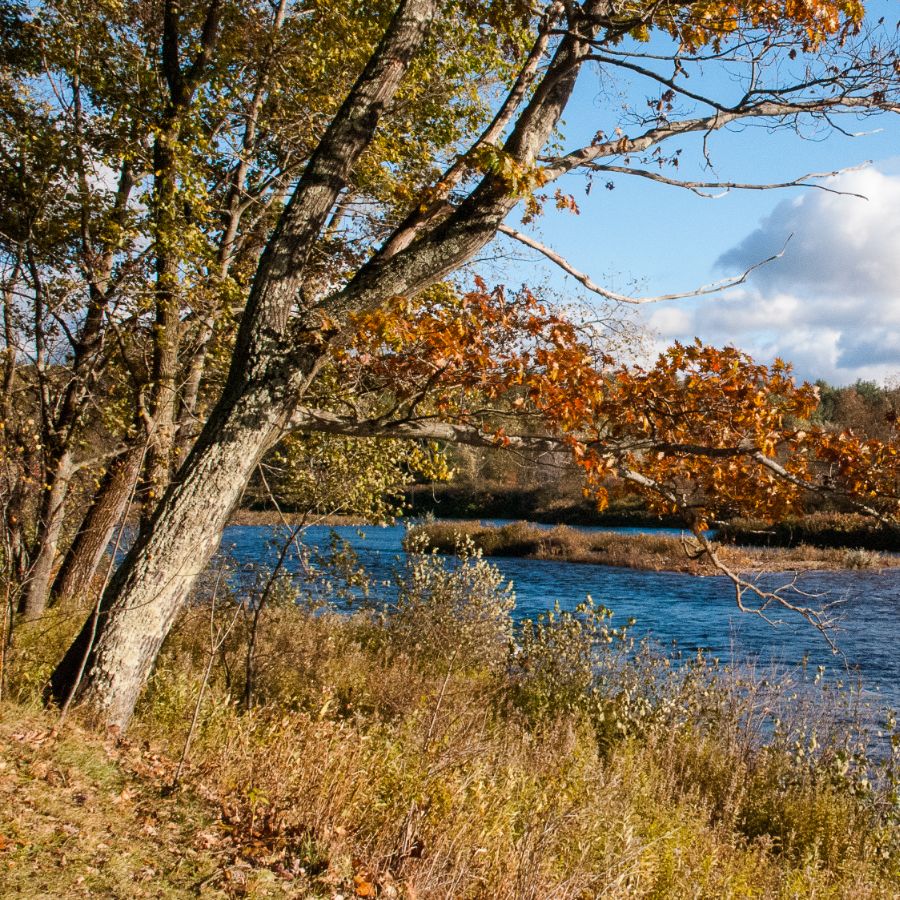
Mohawk State Forest sits in Cornwall and Goshen and is famous for its views from Mohawk Mountain. The higher ground creates unique conditions that some truffles prefer. The western slopes get more rain, making them moister.
The forest floor is covered with years of fallen leaves. This creates a rich layer that feeds truffle fungi. Look in areas where some sunlight reaches the ground.
Truffles here can often be found near black birch trees. This is unusual compared to other locations. Check around fallen logs that have started to rot. These spots are full of nutrients that truffles need. During dry times, focus on north-facing slopes where moisture stays longer.
Other Great Locations For Truffles
Western Connecticut
| Location | Collection Guidelines |
|---|---|
| Algonquin State Forest | Truffle gathering by hand is allowed along forest floor near oak groves. Use only non-mechanical tools. |
| American Legion State Forest | You may collect truffles in upland hardwood areas using a hand trowel. Avoid streambanks. |
| Aldo Leopold WMA | Small-scale hand collection is allowed outside of active wildlife nesting periods. |
| Bennett’s Pond State Park | Truffles may be collected from the deciduous zones off the main trail loop. |
| Camp Columbia State Forest | Upland truffle hunting allowed with handheld tools; respect posted wildlife study areas. |
| Cedar Swamp WMA | Hand-foraging allowed in outer edges; wetland interior is off-limits. |
| Centennial Watershed SF (Canaan Block) | Truffle collection allowed near trailheads; no digging in designated wildlife corridors. |
| Charles E. Wheeler WMA | Foraging is allowed along sandy uplands, not in brackish marsh areas. |
| Collis P. Huntington SP | Light hand-foraging permitted along northern ridge trails. |
| East River Marsh WMA | You can gather truffles in shaded, non-tidal upland zones. Stay out of marsh flats. |
| East Swamp WMA | Upland foraging permitted. Do not disturb forest litter layers with rakes. |
| East Twin Lakes Water Access | Allowed near drier oak-perimeter forest lines; not permitted along lakeshore. |
| Enders State Forest | Collect by hand in northern hardwood stands; no foraging near waterfalls. |
| George C. Waldo State Park | Permitted in pine-oak uplands. Avoid slope erosion by minimizing disturbance. |
| Goshen WMA | Truffle collection allowed in low-traffic upland plots. Avoid tree roots. |
| Great Harbor WMA | Limited foraging by hand allowed in upper forest edge. Marshes are restricted. |
| Housatonic River WMA | Truffles may be hand-collected on the west bank trails; no tools allowed near nesting signage. |
| Housatonic State Forest | Permitted in mature forest zones away from riverbanks. Hand tools only. |
| Mattatuck State Forest | Light hand digging permitted in north-facing oak zones. No soil overturning. |
| Mohawk State Forest (Ziegler Tract) | Allowed by hand away from steep gradients; no foraging within 100 feet of wetlands. |
| Mount Riga State Park | Truffle collection allowed in eastern hardwood areas; be discreet near public overlooks. |
| Nassahegon State Forest | Hand-foraging permitted along blue-blazed trail zones. Avoid conservation signage. |
| Naugatuck State Forest | Truffles can be gathered in uplands by hand only; some seasonal trail closures apply. |
| Newgate WMA | Upland edges open to hand-collection. Cave area and historic zones are excluded. |
| Nod Brook WMA | Foraging allowed along the main trail loop; no digging near waterfowl habitats. |
| Paugnut State Forest | Light truffle gathering permitted in northern dry forest floors. No off-trail digging. |
| Paugussett State Forest | Collection allowed in western uplands near oak-hickory groves. Trails must remain undisturbed. |
Eastern Connecticut
| Location | Collection Guidelines |
|---|---|
| Assekonk Swamp WMA | You can collect by hand in higher elevation forest areas; swamp interior is off-limits. |
| Babcock Pond WMA | Permitted on dry upland perimeters. Avoid moist mossy areas and vernal pools. |
| Barn Island WMA | Foraging allowed near oak groves along the west trail. Wetlands are restricted zones. |
| Bartlett Brook WMA | Small-scale truffle harvesting permitted on western ridges. Stay off damp soil beds. |
| Bear Hill WMA | Upland truffle collecting allowed using hand tools; watch for wildlife nesting notices. |
| Meshomasic State Forest | You may gather along old woods roads with oak-beech cover. No soil disruption allowed. |
| Messerschmidt Pond WMA | Collection allowed in upland areas around pond rim; no digging within 50 feet of shoreline. |
| Millers Pond State Park | Light foraging allowed off the red trail loop. Keep a 30-foot distance from pond edge. |
| Mohegan State Forest | Truffles can be collected by hand in central upland patches; no disturbance to leaf litter layers. |
| Natchaug State Forest | Allowed in upper pine stands and hardwood groves. No digging near historical signage. |
| Nathan Hale State Forest | Permitted around trail intersections with open canopy. Respect posted education zones. |
| Nehantic State Forest | Foraging allowed in mixed hardwood areas on uplands. Avoid areas marked for silviculture. |
| Nipmuck State Forest | You may collect truffles near the southern border in pine-oak mix. Tools limited to hand trowels. |
| Nott Island WMA | Allowed seasonally during dry months along the south ridge trail. Tidal zones excluded. |
| Pachaug State Forest | Upland hand-foraging permitted throughout the main loop; avoid camp zones. |
| Pease Brook WMA | Truffles can be hand-collected near old stone wall paths. Do not disturb denning wildlife. |
| Quaddick State Forest | Permitted in north uplands. Collection discouraged near campgrounds or trailheads. |
| Quinebaug River WMA | Upland truffle gathering allowed on the east ridge. Riverbank zones are restricted. |
| Ragged Rock Creek WMA | Foraging permitted in northeast oak stands. Stay out of brushy wet zones. |
| Raymond Brook Marsh WMA | Allowed near sandy trail stretches; the marsh interior is closed to all digging. |
| Red Cedar Lake (Camp Mooween) | Hand-foraging allowed near shoreline trail pines. Avoid heavily shaded damp areas. |
| Roger Tory Peterson Wildlife Area | Light truffle gathering permitted in upper hardwood zone. Not allowed in designated observation areas. |
| Rose Hill WMA | Upland hand-digging allowed along clear forest trails. Avoid meadow and field habitats. |
| Ross Marsh WMA | Truffles may be gathered by hand near the loop trail exits. Interior wetland not permitted. |
| Salmon River Cove WMA | Upland collection is allowed; tidal creek areas are excluded from all foraging. |
| Salmon River State Forest | You may gather truffles by hand in upland hardwood patches. Leave moss beds undisturbed. |
| Selden Neck State Park | Allowed only on higher elevation hardwood zones. All shoreline and slope areas are excluded. |
| Shenipsit State Forest | Hand truffle collection permitted near fire road intersections. Avoid soil compaction. |
| Sugarbrook Field Trial Area | Light truffle gathering allowed in off-season; avoid open field trial events. |
When The Best Time Of The Year Is To Find Truffles
Fall is the prime season for truffle hunting in Connecticut. Most local varieties mature between September and December when the soil retains summer warmth, but moisture increases.
Early morning hunts after a light rain offer the best conditions as the damp earth releases stronger truffle scents. Spring has a smaller secondary season, usually in April and May.
Temperature matters more than the calendar date. Truffles need soil temperatures between 45-65°F to develop properly. Winter hunts aren’t impossible, but less productive.
The first frost doesn’t kill truffles, but extended freezes make them harder to find and less flavorful. Always check recent rainfall patterns before planning your hunt.
One Final Disclaimer
The information provided in this article is for general informational and educational purposes only. Foraging for wild plants and mushrooms involves inherent risks. Some wild plants and mushrooms are toxic and can be easily mistaken for edible varieties.
Before ingesting anything, it should be identified with 100% certainty as edible by someone qualified and experienced in mushroom and plant identification, such as a professional mycologist or an expert forager. Misidentification can lead to serious illness or death.
All mushrooms and plants have the potential to cause severe adverse reactions in certain individuals, even death. If you are consuming foraged items, it is crucial to cook them thoroughly and properly and only eat a small portion to test for personal tolerance. Some people may have allergies or sensitivities to specific mushrooms and plants, even if they are considered safe for others.
Foraged items should always be fully cooked with proper instructions to ensure they are safe to eat. Many wild mushrooms and plants contain toxins and compounds that can be harmful if ingested.

